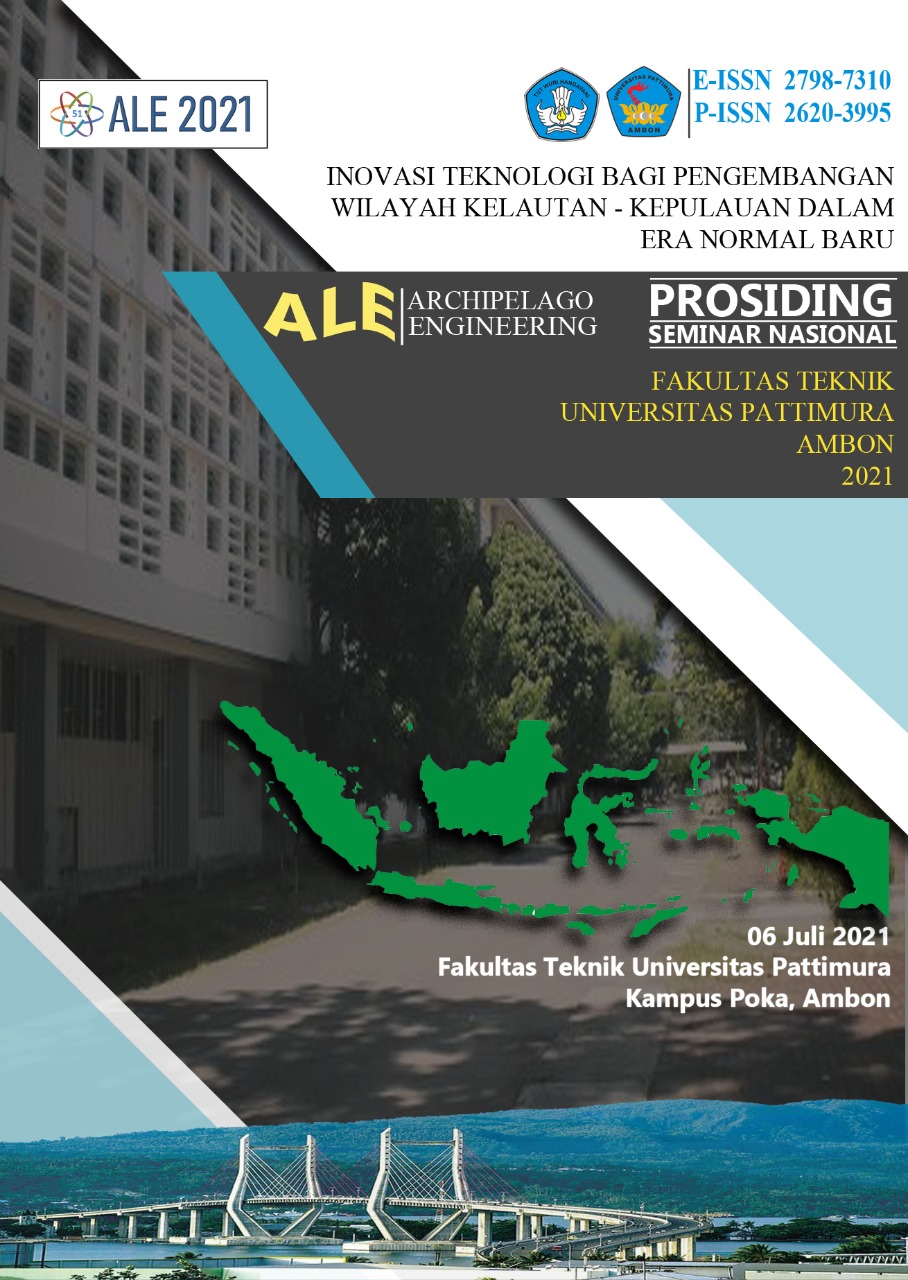ANALISIS KEKUATAN TARIK DAN IMPAK MATERIAL KOMPOSIT POLIMER DALAM APLIKASI FIBERBOAT
Abstract
Composite material is a material that has a multi-phase system composed of reinforcing materials and matrix materials. Causes the composite materials to have advantages in various ways such as low density, high mechanical properties, performance comparable to metal, corrosion resistance, and easy to fabricate. In the marine and fisheries industry, composite materials made from fiber reinforcement, especially fiberglass, have proven to be very special and popular in boat construction because they have the advantage of being chemically inert (both applied in general and marine environments), light, strong, easy to print, and price competitiveness. Thus in this study, tensile and impact methods were used to determine the mechanical properties of fiberglass polymer composite materials. Each test is carried out on variations in the amount of fiberglass laminate CSM 300, CSM 450 and WR 600 and variations in weight percentage 99.5% -0.5%, 99% -1%, 98.5% -1, 5%, 98% -2% and 97.5%-2.5% have been used. The results showed that the greater the number of laminates, the greater the impact strength, which was 413,712 MPa, and the more the percentage of hardener, the greater the impact strength, which was 416,487 MPa. The results showed that the more laminate the tensile strength increased, which was 87.054 MPa, and the more the percentage of hardener, the lower the tensile strength, which was 73.921 MPa.
Downloads
References
[2] Artikel-teknologi. (2018). Pengertian Material Komposit di http://artikel-teknologi.com/pengertian-material-komposit/, 2018 (diakses 08 Juli)
[3] Naresh, K., Shankar, K., Rao, B., & Velmurugan, R. (2016). Effect of high strain rate on glass/carbon/hybridfiber reinforced epoxy laminated composites. Composites Part B, 125-135.
[4] Clareyna, E. D., & Mawarani, L. J. (2013). Pembuatan dan Karakteristik Komposit Polimer Berpenguat Bagasse. TEKNIK POMITS, 208-213.
[5] Minah, F. N., Astuti, S., & Rastini, E. K. (2017). KARAKTERISASI MATERIAL KOMPOSIT POLIMER POLISTYRENE DAN SERAT TEBU. INDUSTRI INOVATIF, 1-6.
[6] kumre, A., Rana, R., & Purohit, R. (2017). A Review on mechanical property ofsisal glass fiber reinforced polymer composites. Selection and peer-review under responsibility of Conference Committee Members of 5th International Conference of Bhopal, (hal. 3466–3476).
[7] Mardiyati. (2018). Komposit Polimer Sebagai Material Tahan Balistik. Jurnal Inovasi Pertahanan dan Keamanan, 20-28.
[8] Toldy, A., Szolnoki, B., & Marosi, G. (2011). Flame retardancy offibre-reinforced epoxy resin composites for aerospace applications. Polymer Degradation and Stability, 371-376.
[9] Shenoi, R. A., & Dotkins, A. R. (2000). Design of Ships and Marine Structures Made from FRP Composite Materials. Comprehensive Composite Materials, 429-449. Southampton: Elsevier Science Ltd.
[10] Mouritz, A., Gellert, E., Burchill, P., & Challis, K. (2001). Review of Advanced Composite Structures for Naval Ships and Submarines. Composite Structures, 21-41.
[11] Maurin, R., Perrot, Y., Bourmaud, A., Davies, P., & Baley, C. (2009). Seawater ageing of low styrene emission resins for marine composites: Mechanical behaviour and nano-indentation studies. Composites, 1024–1032.
[12] Zhang, J., Chaisombat, K., He, S., & Wang, C. H. (2012). Hybrid composite laminates reinforced with glass/carbon woven fabrics for lightweight load bearing structures. Materials and Design, 75–80.
[13] Widyatmaja, D. W., Raharjo, W. W., & Sukanto, H. (2014). pengaruh suhu pencampuran terhadap kekuatan tarik dan fracture toughness epoxy resin - organoclay montmorillonite nanokomposit. MEKANIKA, 101-107.
[14] Wang, H., Xie, G., Fang, M., Ying, Z., Tong, Y., & Zeng, Y. (2015). Electrical and mechanical properties of antistatic PVCfilms containing multi-layer graphene. Composites, 444-450.
[15] Elanchezhian, C., Vijaya Ramnath, B., Ramakrishnan, G., Rajendrakumar, M., Naveenkumar, V., & Saravanakumar, M. K. (2018). Review on mechanical properties of natural fiber composites. Selection and Peer-review under responsibility of International Conference on Processing of Materials, Minerals and Energy, 1785–1790.
[16] Dossou, G. K., Boumbimba, R. M., Bonfoh, N., Hernandez, S. G., Gonzalez, D. G., Gerard, P., et al. (2019). Innovative acrylic thermoplastic composites versus conventionalcomposites: improving the impact performances. Composite Structures, 1-13.
[17] Jesthi, D. K., & Nayak, R. K. (2019). Improvement of Mechanical Properties of Hybrid Composite through Interply Rearrangement of Glass and Carbon Woven Fabrics for Marine Applications. Composites Part B, 467-475.
Copyright (c) 2021 Rezza Ruzuqi, Victor Danny Waas

This work is licensed under a Creative Commons Attribution-ShareAlike 4.0 International License.
An author who publishes in the ALE Proceeding agrees to the following terms:
- Author retains the copyright and grants ALE Proceeding the right of first publication of the work simultaneously licensed under the Creative Commons Attribution-ShareAlike 4.0 License that allows others to share the work with an acknowledgment of the work's authorship and initial publication in this journal.
- Author is able to enter into separate, additional contractual arrangements for the non-exclusive distribution of the journal's published version of the work (e.g., post it to an institutional repository or publish it in a book) with the acknowledgment of its initial publication in this journal.
- Author is permitted and encouraged to post his/her work online (e.g., in institutional repositories or on their website) prior to and during the submission process, as it can lead to productive exchanges, as well as earlier and greater citation of the published work (See The Effect of Open Access).
Read more about the Creative Commons Attribution-ShareAlike 4.0 Licence here: https://creativecommons.org/licenses/by-sa/4.0/.






